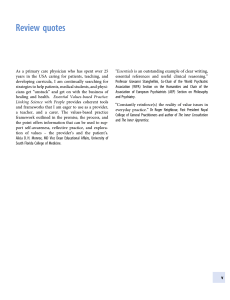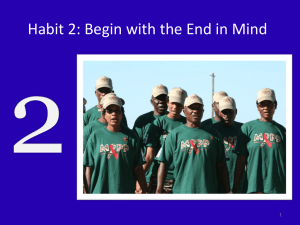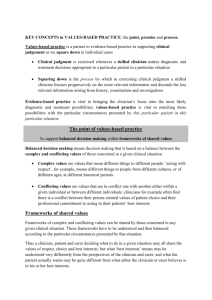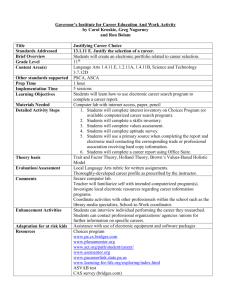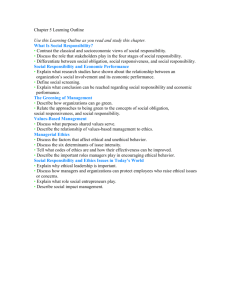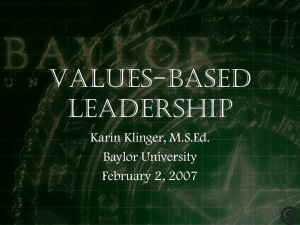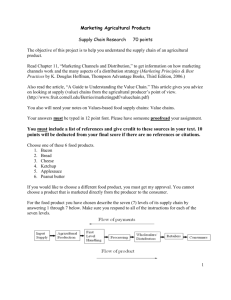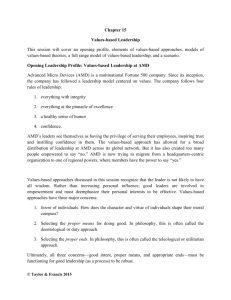Contents
advertisement
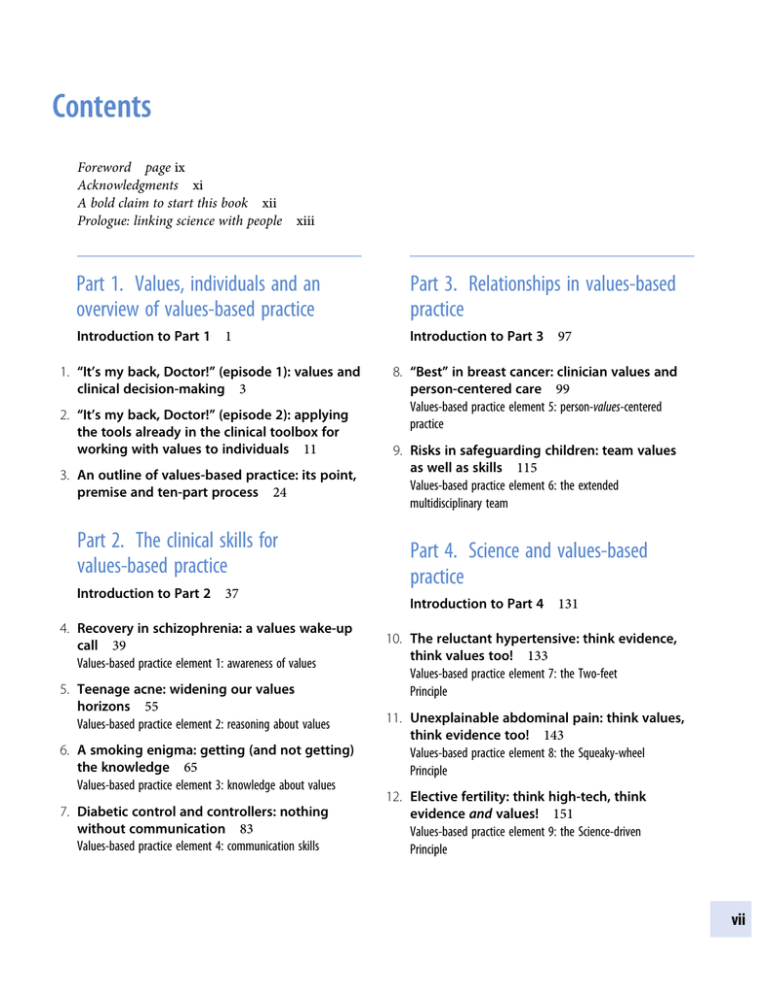
Contents Foreword page ix Acknowledgments xi A bold claim to start this book xii Prologue: linking science with people xiii Part 1. Values, individuals and an overview of values-based practice Part 3. Relationships in values-based practice Introduction to Part 1 Introduction to Part 3 1 1. “It’s my back, Doctor!” (episode 1): values and clinical decision-making 3 2. “It’s my back, Doctor!” (episode 2): applying the tools already in the clinical toolbox for working with values to individuals 11 3. An outline of values-based practice: its point, premise and ten-part process 24 Part 2. The clinical skills for values-based practice Introduction to Part 2 37 4. Recovery in schizophrenia: a values wake-up call 39 Values-based practice element 1: awareness of values 5. Teenage acne: widening our values horizons 55 Values-based practice element 2: reasoning about values 6. A smoking enigma: getting (and not getting) the knowledge 65 Values-based practice element 3: knowledge about values 7. Diabetic control and controllers: nothing without communication 83 Values-based practice element 4: communication skills 97 8. “Best” in breast cancer: clinician values and person-centered care 99 Values-based practice element 5: person-values-centered practice 9. Risks in safeguarding children: team values as well as skills 115 Values-based practice element 6: the extended multidisciplinary team Part 4. Science and values-based practice Introduction to Part 4 131 10. The reluctant hypertensive: think evidence, think values too! 133 Values-based practice element 7: the Two-feet Principle 11. Unexplainable abdominal pain: think values, think evidence too! 143 Values-based practice element 8: the Squeaky-wheel Principle 12. Elective fertility: think high-tech, think evidence and values! 151 Values-based practice element 9: the Science-driven Principle vii Contents Part 5. Bringing it all together Introduction to Part 5 163 13. A good (enough) death: dissensus in end-of-life care 165 Values-based practice element 10: partnership in decision-making 14. “It’s my back, Doctor!” (episode 3): building a shared framework for values-based practice 185 viii Postscript: the small change of care 201 A bold claim to end this book 204 Appendix A: Values-based practice summary and definitions of key terms 205 Appendix B: Values-based practice teaching framework 208 Index 211 Foreword Julia Samuel Founder Patron and Trustee of the Child Bereavement Charity This is truly brilliant book. In the twenty-first-century medical environment, driven by the dual pulls of high costs and cost effectiveness. Patients can get submerged in technology, protocols, and paperwork, to the extent they lose their humanity and experience themselves as a case number, not a person. This book highlights the challenge medical teams, having a plethora of scientific knowledge, encounter every day when faced with the uniquely human problems of each individual patient. Its guidance puts the heart back into medicine. My experience with families whose children have died has taught me that, even when medicine fails as tragically as when a child dies, how the family is responded to at the time has a life-long impact on that family, for good or ill. Every conversation, every decision, every gesture is burned in their memory for life. Often the unforgiveable errors are more to do with the lack of attuned care than with medicine: not enough proper reflection on the needs of this family, careless assumptions made, insensitive communication, which might be appropriate for another family, but is received with fury by this particular family, too much haste to get “it over with.” Any medical professional reading this book is given both a map and a way of thinking which protects against these all too frequent irrevocable mistakes, and ensures the family receives the best possible care at such a difficult time. The coherence with which the authors unpick complex and usually intangible, as well as explicit, situations is extraordinary. They keep the same themes running throughout the text, linking and reinforcing them with each case study, giving their arguments a lot of weight. I was fascinated by the different scenarios, which echoed some of my own experiences with patients and made the text come alive and easy to read. They intentionally didn’t describe the “nightmare” examples where bad practice, bad stories, and bad outcomes come together, recognizing that it is the more subtle everyday situation that is the key learning in this book, because it is from them that individual patients receive genuine person-centered care. This book is a hugely welcome clarion call back to the essential values in medicine, that keys into the natural motivation of most doctors, to reach out to the individual patient and make a difference. It is a very impressive book, and I couldn’t be more delighted to endorse the importance and value of its messages. ix
